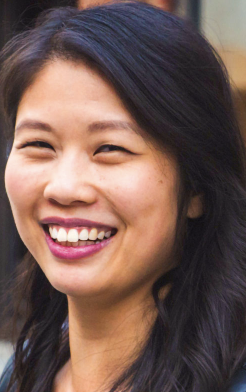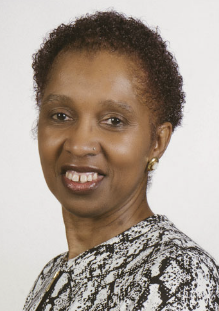Building real-world skills using PCA&D’s Design Thinking BA, AA major
Thursday, June 27th, 2024
Pennsylvania College of Art & Design was honored to celebrate its first class of Design Thinking graduates at the May Commencement ceremonies. The dozen Associate of Arts degree recipients, each of whom also graduated with a concentration such as illustration, animation & game art, graphic design, fine art, or photography & video, and the six Bachelor of Arts recipients, each of whom also graduated with at least one concentration, are the result of long hours of planning, concepting, collaboration, and solo projects.
But what is Design Thinking, exactly, and how can it be used to jump-start or further a creative career?
Real-world skills
Prof. Vanessa Xie‘s own career background, with diverse experience in sales, design, research, and hospitality, is in its own way an example of what Design Thinking is all about.

Vanessa Xie
There are, she says, real-world skills that form the backbone of what Design Thinking teaches. She lists communication; working collaboratively; creative problem-solving; critical thinking; and building a reflective and learning mindset as attributes that arise from studying Design Thinking.
And there’s also the emphasis on divergent thinking — making connections between seemingly unrelated topics — and convergent thinking — learning to filter information you need vs. information you don’t need).
Put all of those skills together, Xie says, and you are building an approach to understanding and solving problems.
“It’s mostly an approach to understanding a problem, challenge, or topic through the lens of the target audience … and in most cases coming up with creative and/or unconventional solutions to solve them,” Xie states. “It’s an exploratory and inclusive practice that can be manipulated to suit the individual’s need.”
As an example, she says, Design Thinking is a great field of study for students who want a career within the arts and design industry but not necessarily as an artist or designer, or a student who is interested in expressing their creativity through a medium that is different from traditional mediums such as paint or photography.
“You see (Design Thinking principles) used a lot in business,” Xie says.

Nandley Noel poses at the 2024 Senior Show with images of her solo Design Thinking project in the works.
Who’s the focus?
What it comes down to, says Nandley Noel, is the creation of “user-based design strategies … that solve real problems.”
Noel, a member of PCA&D’s Class of 2024, graduated in May with a BA in Design Thinking with concentrations in graphic design and illustration. She’d been unfamiliar with the concept of Design Thinking until her arrival as a transfer student at PCA&D. “I was familiar with design itself of course, like graphic and web design,” Noel says. “However, tackling design from an empathetic, human perspective in order to solve problems, and that method actually having a name, no, I didn’t know.” Previously a Visual Communications major at her previous college, Noel, learned that Design Thinking would offer a smooth transition and “it pulled me in.”
At PCA&D, Noel worked on both a collaborative project and a solo project her senior year. In her collaborative project, with two other Design Thinking seniors, there were three roles, she says: the person who made sure assignments and deadlines were done and met; the person who reached out to interview the clients and keep information flowing, and the person who made sure assignments were turned in and people did their work — and, as in many real-world projects, there was overlap in those roles as well. And, as in real-world projects, there was an emphasis on holding other team members accountable.
For her solo project, Noel created and designed a hanging light fixture — a project that fit well with her longstanding interest in lighting fixtures and their design. “I thought to myself, that if I could have a shop of anything, I would want it to be like that,” she says. “This senior project was the ultimate test for me to answer how badly I wanted it — and to what extent I would go to get it done.”
Ultimately, she says, she would like to design and create more fixtures, preferably for her own business. For now, though, she says she’s “open to all kinds of jobs, as long as it involves Design Thinking, the visual arts, or communications in some way. Design thinking is a little tricky because there aren’t exactly job positions calling for design thinkers, but the door is abundantly open for many jobs. Some can be a product designer, innovation consultant, design researcher, or design strategist, some of which can be very lucrative,” Noel says. “At the end of the day, I am very versatile and appreciate the fact I have a versatile major under my belt as well.”
Continuing on the path
When she was introduced to Design Thinking, April Davenport had a lightbulb moment:
“After learning more about what the college definition of Design Thinking means, I realized I was doing this all along in my creative paths,” Davenport says. Also a transfer student to PCA&D, Davenport recently graduated with a BA in Design Thinking and a concentration in fine art and graphic design.

April Davenport
“Every time I sewed something new or created a design for myself or someone else, I used a process. It was a Design Thinking process. Maybe it wasn’t the book-defining way, but it was my process. I was empathetic to the trends and needs. I observed what was needed and or wanted. I sketched out my designs. My problem-solving would come in if and when there was a mistake. I would go back and look at how I could solve the problem, get others’ opinions and suggestions … My design has always been a process of (Design) Thinking at work. It is also understanding that my process is never finished while my current project is.”
Learning more about the process, Davenport says, allows her to improve the strategies and better implement the Design Thinking process. “I would like consider using the researching part as a starting place in my job search,” Davenport adds.
Building a breadth of experience
“I think one of the best attributes behind the Design Thinking BA is that (students) can concentrate on more than one specialty,” says Holly Mosher. Chair of Business in Creative Industry and Director of Distance Education, Mosher has been intimately involved in bringing the Design Thinking major to life. The Design Thinking curriculum, she says, “allows the student to focus on a combination of the majors we offer at PCA&D.

Holly Mosher
“I think many of are students are really interested in more than one area in the creative industry, so this is a way to learn more about multiple disciplines and create a diverse career path in their future. This (BA) degree offers practical skills in a collaborative learning environment.”
Mosher also is excited about the Associate of Arts degree PCA&D now offers in Design Thinking. It is, she says, an excellent opportunity for students to have “flexibility and options in getting a degree.
“This gives students a time- and cost-effective way to earn a degree,” she adds of the two-year AA program. “It will enable students to develop skills sets to enter and succeed in the workplace. It also serves as a way for students to have a focused education and the option to return to finish their BA for career advancement in the future.”
